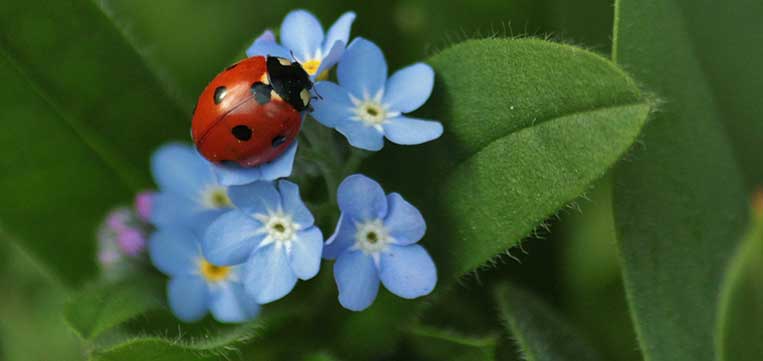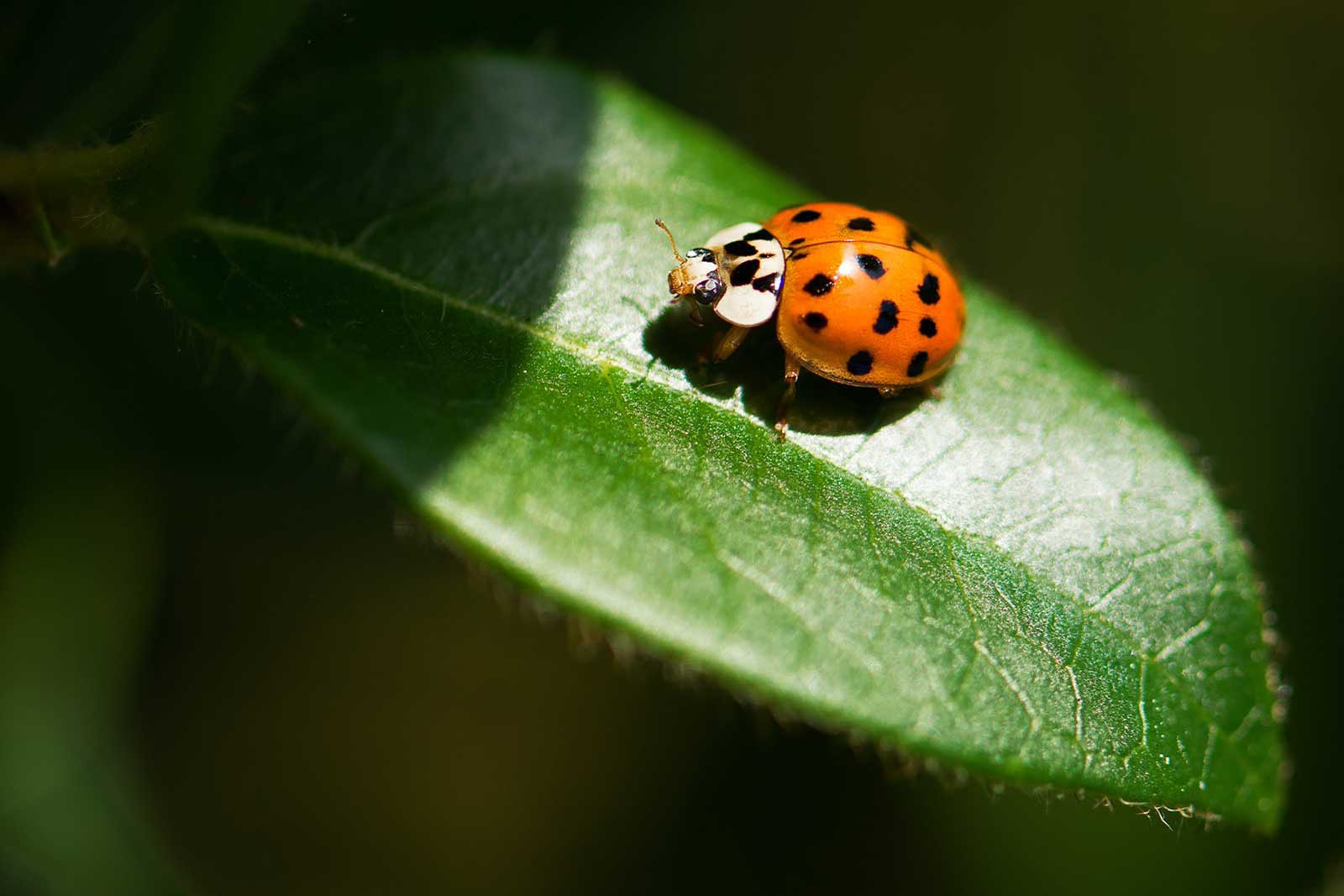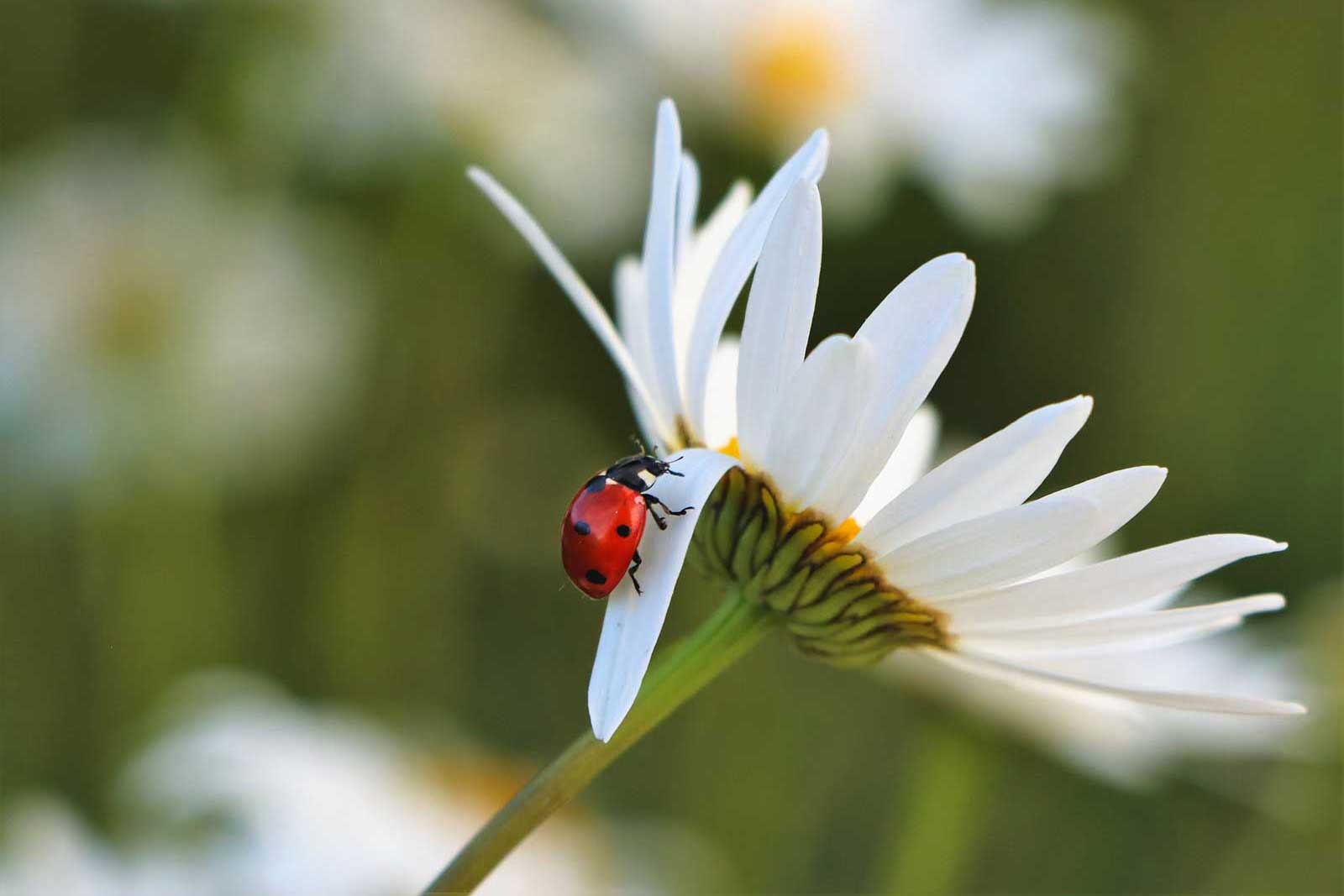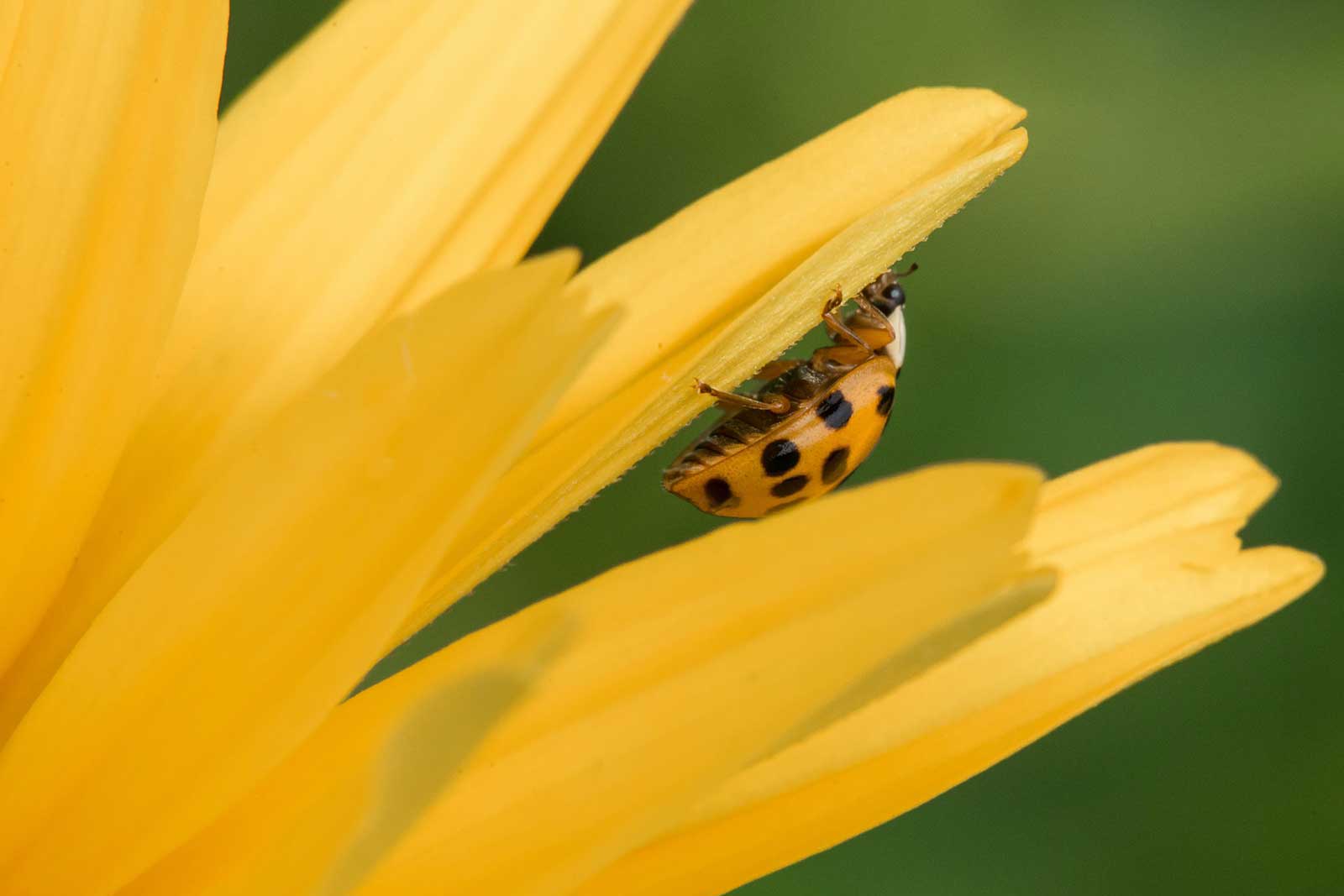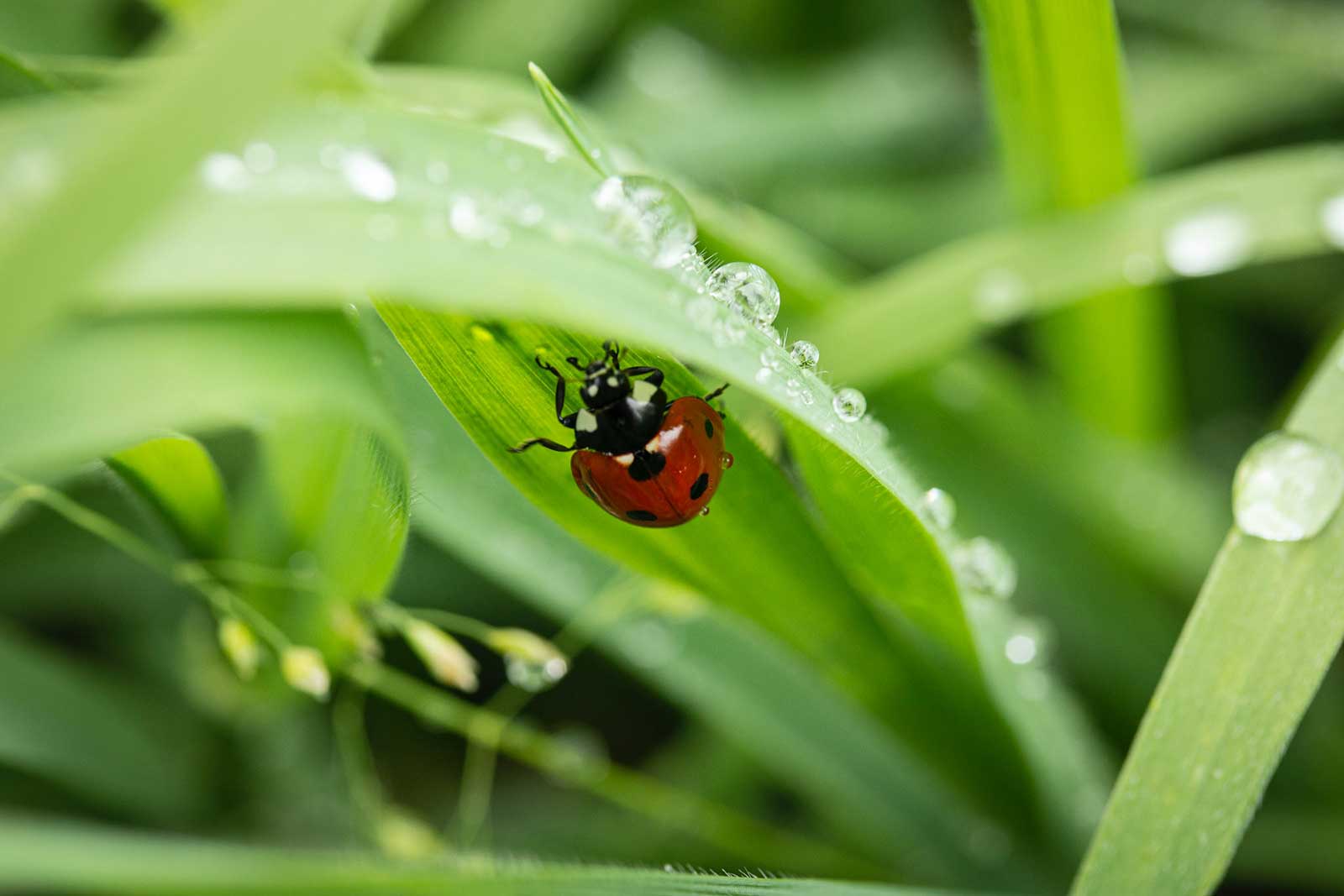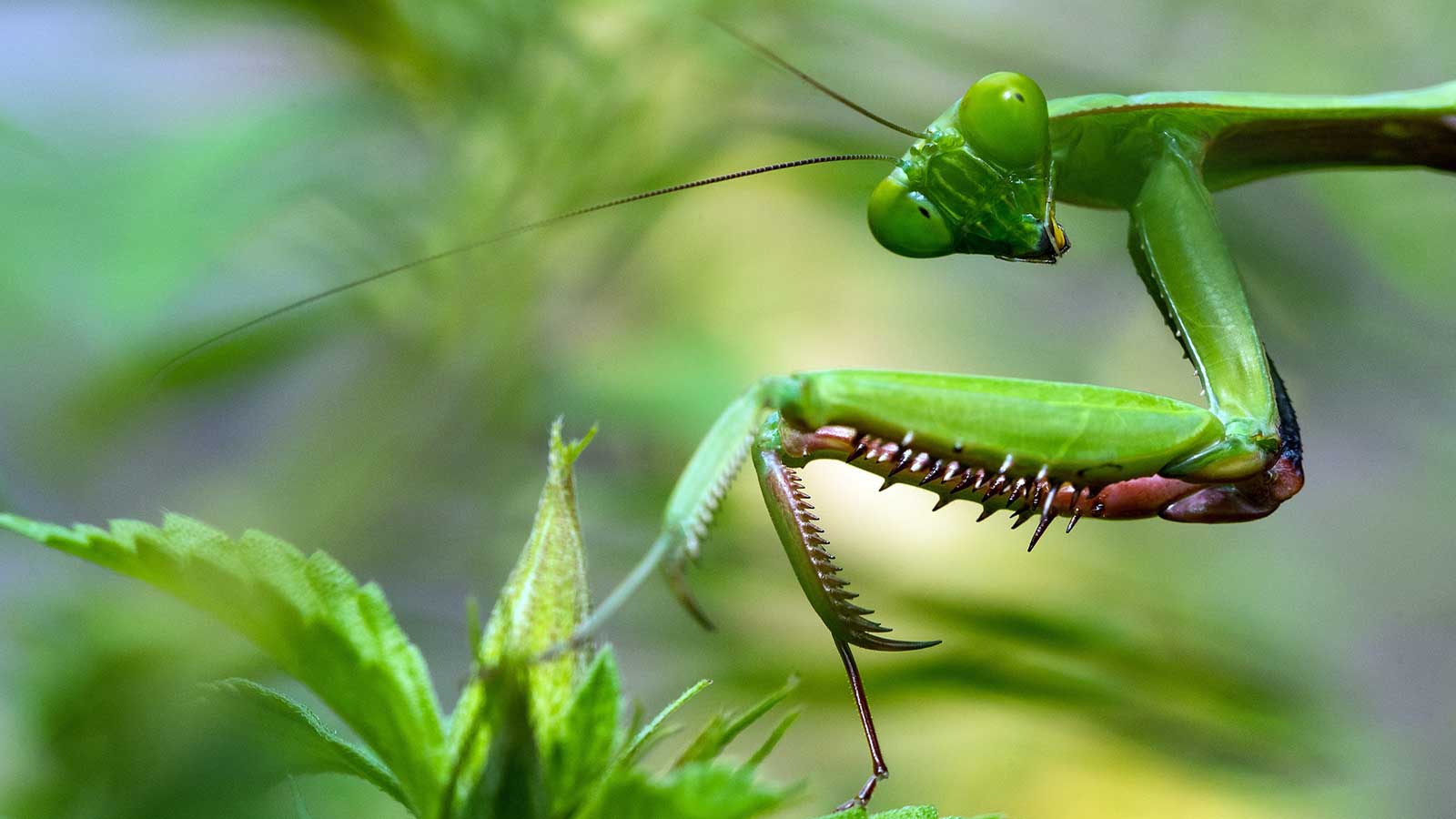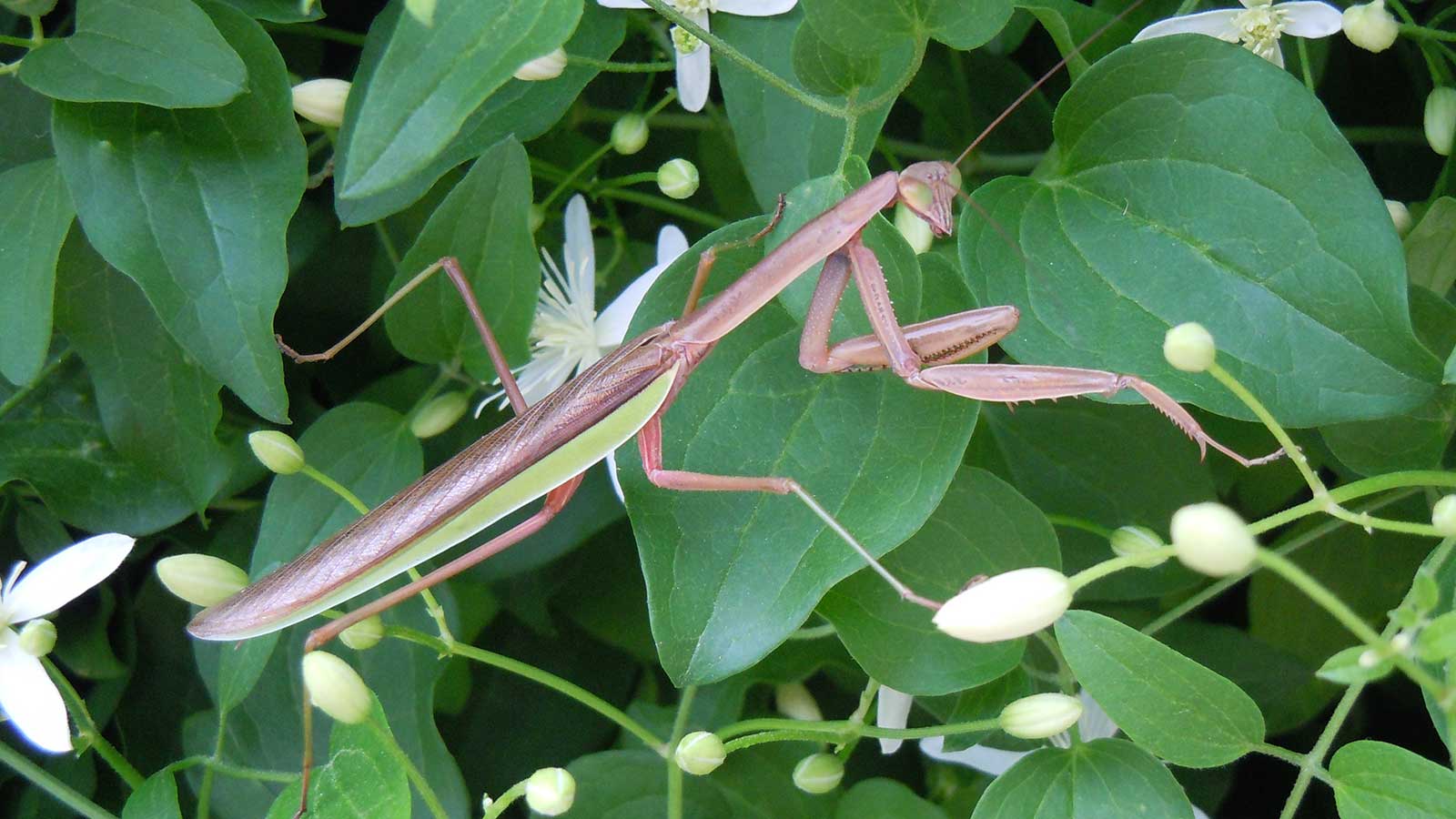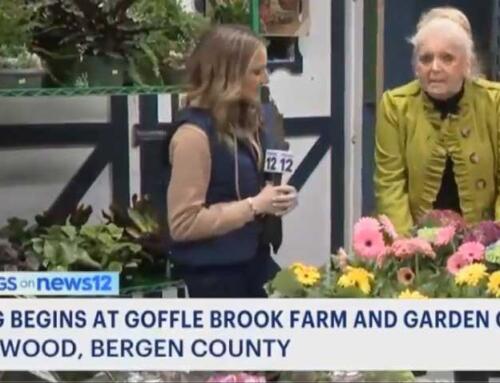It’s A Bugs Life at Goffle Brook Farms
beneficial insects in the garden
Lady Bugs and Praying Mantis
Implement biological pest control with the addition of beneficial predatory insects to any garden and landscape bed. Practicing sustainable landscaping by releasing beneficial insects provides an excellent learning opportunity for children to learn how Mother Nature naturally builds an eco-system and at the same time reduces the need for chemicals and/or pesticides usage. Beneficial insects are insects that perform valuable tasks to sustain an ecosystem, such as pollination and pest control. Many people perceive all insects as pests, but insects are vital to their ecosystems. In addition to pollination and pest control, many insects provide soil fertilization or food for other insects and animals.
 Maintaining healthy landscaping, trees, shrubs, and other plants often requires work and labor from either the owner or a tree and plant health care specialist. But one method is to let insects do the job instead. Beneficial insect release has become an increasingly popular method for homeowners to maintain their gardens and landscapes in a natural, sustainable way.
Maintaining healthy landscaping, trees, shrubs, and other plants often requires work and labor from either the owner or a tree and plant health care specialist. But one method is to let insects do the job instead. Beneficial insect release has become an increasingly popular method for homeowners to maintain their gardens and landscapes in a natural, sustainable way.
One of the primary benefits of using beneficial insect release is that the process avoids chemical pest control methods such as pesticides. While pesticides are effective at controlling and eliminating pests, some plants and beneficial insects like bees can be affected negatively. Beneficial insects are a natural, organic, and environmentally sustainable way to control pests. Many insects have also shown to have growing resistance to pesticides. Predator creatures avoid that issue entirely.
Beneficial insects also fit into the larger goal of integrated pest management: to control pests while preserving the natural environment and ecosystem as much as possible. Nature has many self-regulating elements, and predator insects are one element from which humans and landscapes can benefit. A fantastic means and educational tool with which to teach young gardeners and children about Mother Nature and green gardening practices.
Ladybugs (Coccinellidae)
Ladybugs are the iconic beneficial insect. You can count on them to help control soft-bodied pests in your vegetable garden or landscaped bed within a variety of climates. Ladybugs help to control Alfalfa Weevil (Hypera postica Gyllenhal), Aphids (Mult), Armyworm (Pseudaletia unipuncta), 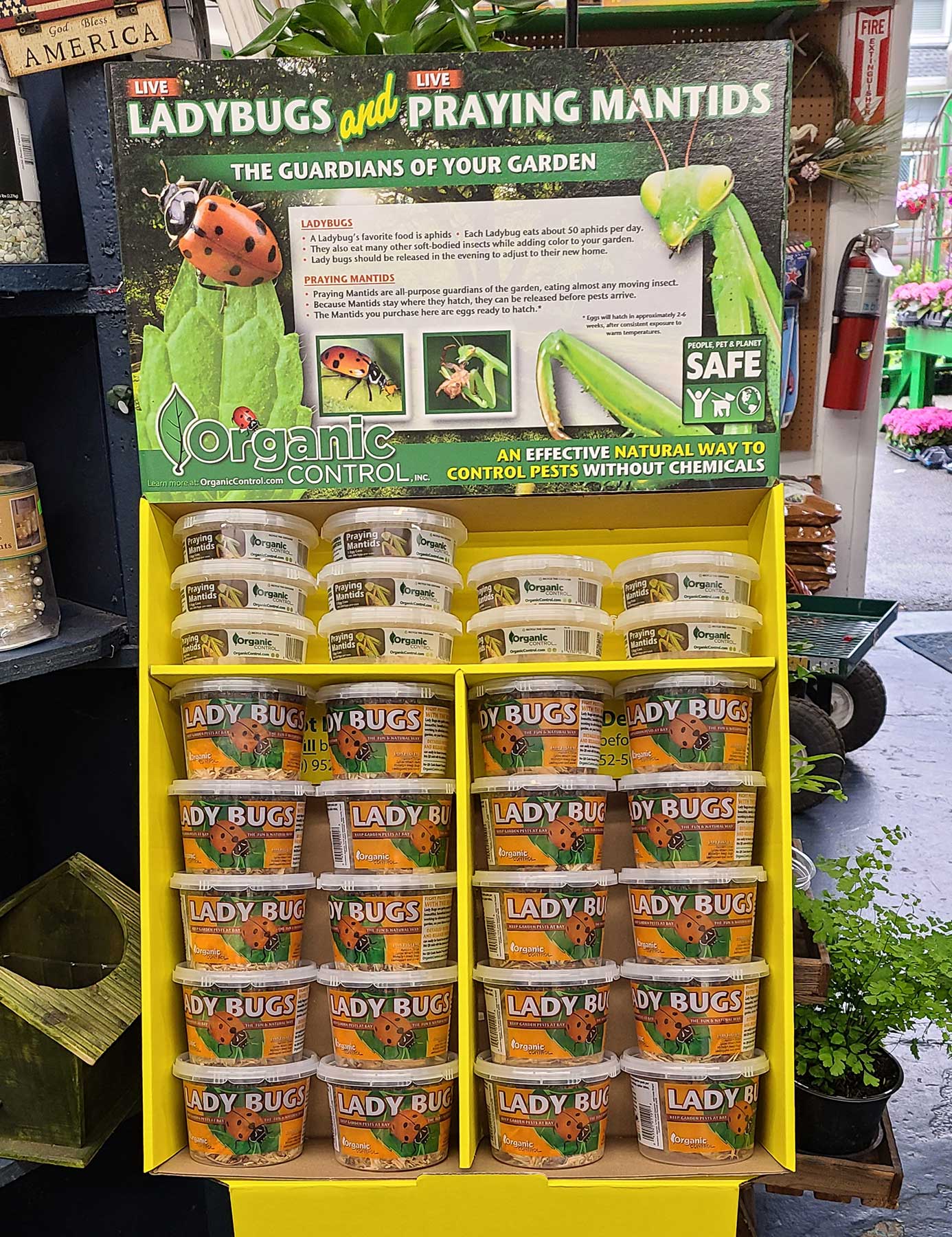 Asparagus Beetles (Crioceris asparagi (common); Crioceris duodecimpunctata (spotted)), Bean Beetles – Mexican Bean Beetle (Epilachna varivestis Mulsant), Bean Thrips (Caliothrips fasciatus), Beet Armyworm (Spodoptera exigua (Hubner)), Beet Leafhopper (Circulifer tenellus), Black Scale (Saissetia oleae), Brown Almond Mite (Bryobia rubrioculus), California Laurel Aphid (Euthoracaphis umbellulariae), Caterpillar Eggs (Mult), Citrus Red Scale (aka California Red Scale) (Aonidiella aurantii), Citrus Yellow Scale (aka California Yellow Scale) (Aonidiella citrina), Coconut Mealybug (Nipaecoccus nipae), Colorado Potato Beetle Larvae, Grape Leafhopper (Erythroneura elegantula), Greenhouse Whitefly (Trialeurodes vaporariorum), Leafhopper (Circulifer tenellus), Leafhopper (Empoasca sp), Mealybug (Planococcus citri), Mealybug (Pseudococcus sp), Mexican Bean Beetle (Epilachna varivestis Mulsant), Mites (Tetranychus sp), Potato Leafhopper (Empoasca fabae), Potato Leafhopper; Bean Jassid (Empoasca fabae), Scale (Mult.), Silverleaf Whitefly (Bemisia sp), Spider Mite (Mult), Sweet Potato Whitefly (Bemisia tabaci), Sweetpotato Whitefly (Bemisia sp), Thrips (Franklinothrips sp), Two-Spotted Spider Mite (Tetranychus urticae)
Asparagus Beetles (Crioceris asparagi (common); Crioceris duodecimpunctata (spotted)), Bean Beetles – Mexican Bean Beetle (Epilachna varivestis Mulsant), Bean Thrips (Caliothrips fasciatus), Beet Armyworm (Spodoptera exigua (Hubner)), Beet Leafhopper (Circulifer tenellus), Black Scale (Saissetia oleae), Brown Almond Mite (Bryobia rubrioculus), California Laurel Aphid (Euthoracaphis umbellulariae), Caterpillar Eggs (Mult), Citrus Red Scale (aka California Red Scale) (Aonidiella aurantii), Citrus Yellow Scale (aka California Yellow Scale) (Aonidiella citrina), Coconut Mealybug (Nipaecoccus nipae), Colorado Potato Beetle Larvae, Grape Leafhopper (Erythroneura elegantula), Greenhouse Whitefly (Trialeurodes vaporariorum), Leafhopper (Circulifer tenellus), Leafhopper (Empoasca sp), Mealybug (Planococcus citri), Mealybug (Pseudococcus sp), Mexican Bean Beetle (Epilachna varivestis Mulsant), Mites (Tetranychus sp), Potato Leafhopper (Empoasca fabae), Potato Leafhopper; Bean Jassid (Empoasca fabae), Scale (Mult.), Silverleaf Whitefly (Bemisia sp), Spider Mite (Mult), Sweet Potato Whitefly (Bemisia tabaci), Sweetpotato Whitefly (Bemisia sp), Thrips (Franklinothrips sp), Two-Spotted Spider Mite (Tetranychus urticae)
Ladybuy Release Instructions:
- When releasing outdoors make sure that there is shade for the ladybugs.
- Try to release in the evening so that they have some time to adapt to your location.
- Give your plants a light misting of water before the release.
- The ladybugs may become dehydrated during travel.
- The moisture will also help to attract and retain the ladybugs.
Praying Mantis – Mantids
An icon of the beneficial insect world, praying mantids serve as powerful helpers in garden pest control. Commonly called the “praying mantis”, that name is a more general term that encompasses mantids along with the 14 other families of mantises. They are generalist predators with a broad ranging appetite consisting of various insects and the occasional small animal.
Praying Mantids eat a wide variety of garden pests. In their younger stages they eat aphids, thrips, flies and maggots, small caterpillars, leafhoppers, white grubs and other soft-bodied insects. Mature Mantids feed on larger caterpillars, earwigs, chinch bugs, sow bugs, beetles, grasshoppers and other large insects.
A praying mantis may look like a creature from a 1960s sci-fi film – but in reality, it’s a great insect to add to a garden when other pests are problematic. An extreme predator, the praying mantis has such a quick reaction speed that it can even catch a fly that lands nearby. If other insects are destroying your garden, a praying mantis is an efficient exterminator.
A praying mantis sits, quietly camouflaged in its surroundings, until insects land nearby. While waiting for the next meal, a mantis holds its front “arms” up in a position quite peculiar for an insect, hence the moniker praying mantis. When resting on branches or leaves, the praying mantis blends in extremely well with its surroundings, making it hard for predators or prey to spot it. It even has the ability to change its color slightly. The mantis also has an excellent sense of sight, able to notice even the slightest movements 60 feet away. Once a praying mantis catches an insect, it holds its prey with barbed forearms that help prevent the food from escaping.
The word mantis is a Greek term that means “prophet,” “soothsayer” or “seer.” This creature is considered good luck in some cultures. Long ago, the French believed that a praying mantis would help guide lost children to their homes.
Instructional Videos for Ladybugs and Mantids
We are open and, if you are comfortable, would love for you to visit our open-air store and property. In addition to getting much needed fresh air here, we are practicing social distancing, meaning our employees and customers are to remain at least 6 ft apart. In addition to social distancing we have implemented the following practices:
- We have distanced our cash registers 6 ft apart to accommodate this new protocol
- Contact free credit card payment methods, including Apple Pay and Google Pay, are available for your convenience
- Wearing gloves/Frequent Hand Washing
- Disinfectant wipe downs of surfaces
- Delivery/Pick-up Options
If you would like to stay home, but still shop with us, we will be taking phone-in orders. Please feel free to reach out to us at 201-652-7540. Delivery is available. ALL ORDERS must be done via tel-652-7540 and you don’t get an answer please call or text 201-755-7959 and we will get back to you as soon as possible.
We are also offering curbside pick-up. You can call in your order and we will call you when it is ready to pick up. Once you reach the parking lot you can call to let us know you are at the store.Our social media (Instagram and our Facebook Page) accounts and our website are the best ways to monitor our hours and we encourage you to communicate with us if you have any concerns or questions regarding our business.
As per the Department of Agriculture Goffle Brook Farm & Garden Center is considered an essential business and will remain open Monday through Sunday 8:30-5:00. The only change in those hours would be a day that rains all day. If it is a rainy day just call first to be sure we are open.
Thank you for your continued support. Best (Healthy) Wishes,
The Staff at Goffle Brook Farms Garden Center
Goffle Brook Farms

